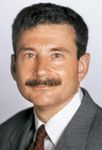FDA strengthens medical device monitoring
Healthcare experts from two Michigan hospitals are helping the Food & Drug Administration find ways to prevent medical device errors. The FDA hired Beaumont Technology Usability Center (BTUC) late last year to help identify the causes of and risks associated with tubing and catheter misconnection errors. The move is part of an ongoing national effort by the FDA to closely monitor the safety of medical devices.

The initiative, slated to end in April, is part of the Medical Product Surveillance Network (MedSun) program, an ambitious plan hatched by the FDA in 2002 to collect data on and monitor the malfunctions and misuses of medical devices. MedSun is a network of about 350 hospitals with 100 beds or more that have been recruited and specifically trained to identify and report medical device problems to the FDA. The program is administered by the Center for Devices and Radiological Health (CDRH) of the FDA. MedSun's computer reporting system allows doctors nationwide to report to the FDA serious problems with medical devices such as infusion pumps, stents, and defibrillators. The FDA estimates that medical device errors cause 300,000 deaths and injuries each year.
"We encourage the participation of pharmacists because so much of what gets reported affects them," said Marilyn Flack, MedSun project director for the FDA. "It is sort of a canary-in-the-coal-mine concept. The idea is to get an early warning about any device problems so we can, in turn, contact facilities and tell them what to look out for."
"There is no doubt that as this project expands, the role of health-system pharmacists will expand," said Jeffrey C. Lerner, Ph.D., president and CEO of ECRI, a healthcare technology safety reporting and research agency that is part of the MedSun reporting system. "The critical factor in ensuring the safety of medical devices is evaluating not just what works but how well it works. The more reports available, and the more pharmacists providing input, the greater the safety factor," Lerner said.
"MedSun is a tremendous concept," agrees Allen Vaida, Pharm.D., executive VP of the Institute for Safe Medication Practices. "The reports the network issues are very valuable. It is a proactive program, and in medical safety, early communication can make a big difference."
To that end, each MedSun participant appoints a risk manager or biotechnology engineer to regularly file patient safety reports. Until the formation of the MedSun network, reporting of safety and functionality problems with medical devices by hospitals and manufacturers to the FDA was limited. "We did not get the anticipated number of reports we were hoping for, even after Congress mandated that manufacturers had to report [problems] to us," said Flack.
To improve its processes, the FDA created MedSun, "a program that would facilitate communication," said Flack. The idea was to form a network that would regularly report possible problems. "When we first began seeking reports in the late 1990s, we were getting about seven [reports] a year. Since 2002, we've been averaging about 350 a year," she said.
"We hope that hospital pharmacists would be aware of these issues," Flack added, "and participate in team efforts to reduce the problems. We encourage all health-system pharmacists to contact their risk manager whenever they even suspect a problem."
A copy of the FDA's post-market program for medical devices report and more information about MedSun is available at http://www.fda.gov/cdrh/postmarket/mdpi.html.
FDA MedSun program sets specific goals
The Medical Product Surveillance Network (MedSun) program was created in 2002 to provide an early warning system for medical device safety and functionality issues.
MedSun has three major objectives:
1. To rapidly identify and understand problems with the use of medical devices